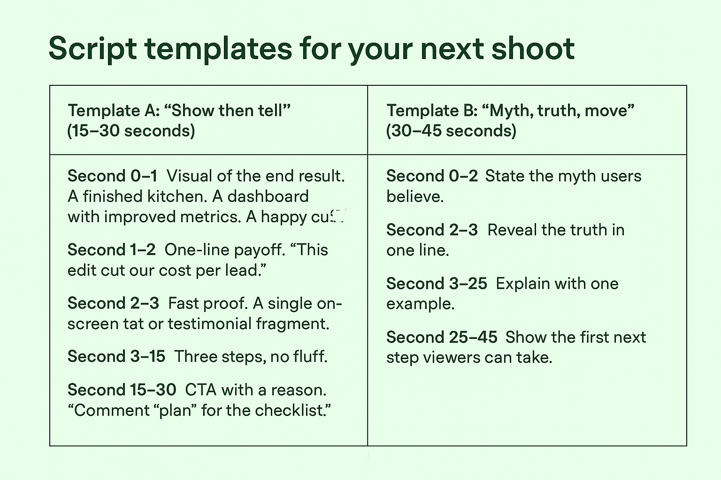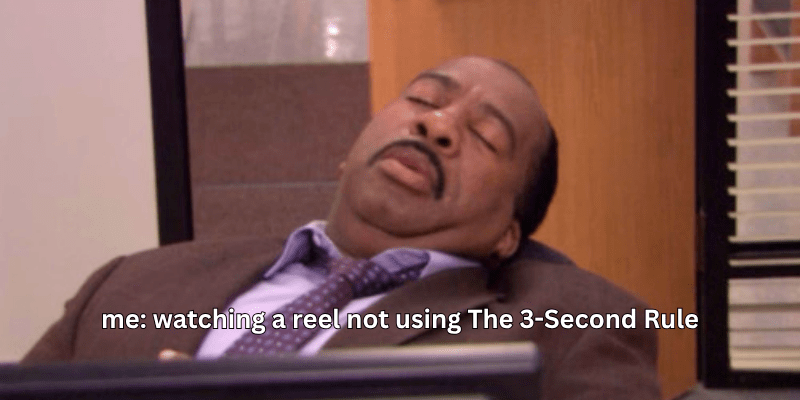The 3-Second Rule: Why No One’s Watching Your Reels
Why Torro Media cares about The 3-Second Rule
At Torro Media (torro.io), we lead paid and organic social for service brands, e-commerce shops, and B2B teams. We test hooks, watch-time curves, and creative variables across thousands of posts each year. That gives us a clear view of what consistently earns attention. For [client], a respected leader in their category, we shaped a simple three-part hook system and a weekly testing cadence. Their watch time improved, comments grew, and inbound inquiries followed. Authority comes from repetition, process, and outcomes, not hype.
What The 3-Second Rule actually means
The 3-Second Rule is the idea that your video must create clarity and curiosity in the first three seconds. People should instantly understand what this video is about, why it matters, and why they should keep watching. Miss that window and the algorithm assumes the content is not a fit. Hit it and distribution expands.
The attention formula we use at Torro
1. Say the payoff first
Promise the outcome up front. Do not bury it. “In 30 seconds, you will know which ad type to use for a local launch” beats a slow brand intro every time.
2. Prove you are worth it
Show a fast visual or social proof. A quick before and after. A single metric on screen. A recognizable challenge. Proof earns trust faster than adjectives.
3. Create a curiosity gap
Pose the question your audience already has. Remove extra words. Friction kills retention. Curiosity keeps people moving.

Hook frameworks that convert attention into watch time
Problem → Payoff → Process
“Your cost per lead doubled this fall. Here is how we fixed that with creative rotation. Step one, audit themes. Step two, rematch hooks to keywords. Step three, boost winners for seven days.” Short. Clear. Useful.
Common mistake → Quick fix
“You start Reels with a logo card. Viewers skip. Replace it with a human face and a one-line promise. Engagement climbs.” Simple beats clever.
Counterintuitive truth → Why it works
“Trends are not a strategy. Consistency is. Here is why repeatable formats win.” People stay for the explanation.
Script templates for your next shoot
Template A: “Show then tell” (15–30 seconds)
- Second 0–1: Visual of the end result. A finished kitchen. A dashboard with improved metrics. A happy customer.
- Second 1–2: One-line payoff. “This edit cut our cost per lead.”
- Second 2–3: Fast proof. A single on-screen stat or testimonial fragment.
- Second 3–15: Three steps, no fluff.
- Second 15–30: CTA with a reason. “Comment ‘plan’ for the checklist.”
Template B: “Myth, truth, move” (30–45 seconds)
- Second 0–2: State the myth users believe.
- Second 2–3: Reveal the truth in one line.
- Second 3–25: Explain with one example.
- Second 25–45: Show the first next step viewers can take.

On-camera delivery that helps retention
Open hot
Start speaking immediately. No long greetings. No brand boilerplate. Place your mouth within a foot of the mic. Crisp audio beats fancy cameras.
Use movement, not just cuts
Change framing at the hook. Add a quick push-in. Gesture with intent. People react to motion. Your first three seconds should feel alive.
Trim the connective tissue
Delete preambles, filler phrases, and repeated words. You can keep your personality. Just remove the padding.
Editing checklist for the first three seconds
- Hook text on screen by second one. Big, readable, high contrast.
- Faces visible when possible. Humans connect quickly with humans.
- Sound pattern change by second two. A beat, a cut, or a pause used on purpose.
- Remove blank frames. Silence reads as friction.
- Captions burned in. Many people watch muted at first.
Creative variables to test each week
Hooks
Outcome-first vs question-first vs contrarian-first. Keep the body identical. Only change the hook. Find the winner, then scale it.
Visual starters
Face close-up vs product macro vs over-the-shoulder screen. One variable at a time.
CTA placement
Front CTA at second five vs end CTA. Small differences can shift completion rate.
What to measure so you know The 3-Second Rule is working
Three-second views and hold rate
Watch how many viewers make it past second three. Rising hold rates usually correlate with reach and conversions.
Average view duration and completion rate
These are the heartbeat of short-form. Aim for steady improvements over a month, not one viral outlier.
Saves, shares, comments
These are stronger signals than likes. They indicate usefulness. They teach the algorithm who should see you next.
Real-world example
We coached a team that was opening with logo animations. Their first three seconds were quiet and abstract. We replaced the open with a strong promise and a punch-in on the speaker, then added a single on-screen proof. The result was an engaging reel that lifted three-second holds and completions. The creative was not louder. It was clearer.
Common mistakes that tank the first three seconds
1. Starting with “Hi, I’m…”
Your name can wait. Value goes first. Identity follows.
2. Copying trends without context
Trends are tools. Use them to support your message, not to replace it.
3. Hiding the payoff
Do not tease a secret for 40 seconds. Show the value early, then explain.
Turn The 3-Second Rule into a weekly workflow
Monday: Brainstorm five hooks
Write them like headlines. Short. Specific. Benefit-first.
Tuesday: Shoot four versions in one hour
Batch recording keeps energy high and friction low.
Wednesday: Edit two cuts per video
Change only the opening. Keep the rest consistent so the data is clean.
Thursday: Publish, pin, engage
Respond to comments promptly. Add clarifications where people get stuck.
Friday: Review retention graphs
Pick the week’s winner. Build next week’s scripts around that learning. Repeat.

Frequently Asked Questions
What is The 3-Second Rule?
The 3-Second Rule is the practice of earning attention and setting clear expectations within the first three seconds of a social video so viewers keep watching and algorithms expand distribution.
How long should a Reel be?
Reels should be as long as they are useful. Many high-performing videos run 15 to 45 seconds when the hook is strong and the structure is tight.
What makes a good hook?
A good hook is a short promise of value, clear language that names the outcome, and a visual or audio change that signals momentum.
Do captions matter for short-form video?
Captions matter because many viewers watch without sound and platforms index text for discovery, so captions increase clarity and accessibility.
Should I follow trends?
Trends should be used when they support your message and audience goals, not as a replacement for strategy or brand voice.
How often should I post?
Posting frequency should match your ability to keep quality high, but most brands see steady gains with three to five intentional posts per week.
What metrics matter most?
The metrics that matter most are three-second hold rate, average view duration, completions, saves, and shares because they indicate genuine attention and usefulness.
Ready to put The 3-Second Rule to work?
If you want help building a repeatable system for attention, watch time, and leads, we are ready. Get started here!



